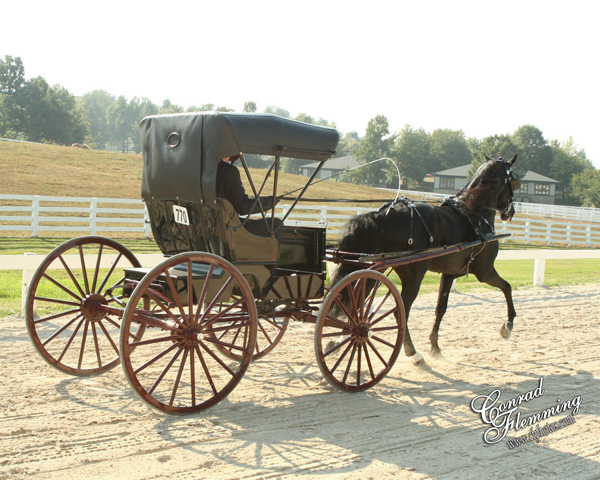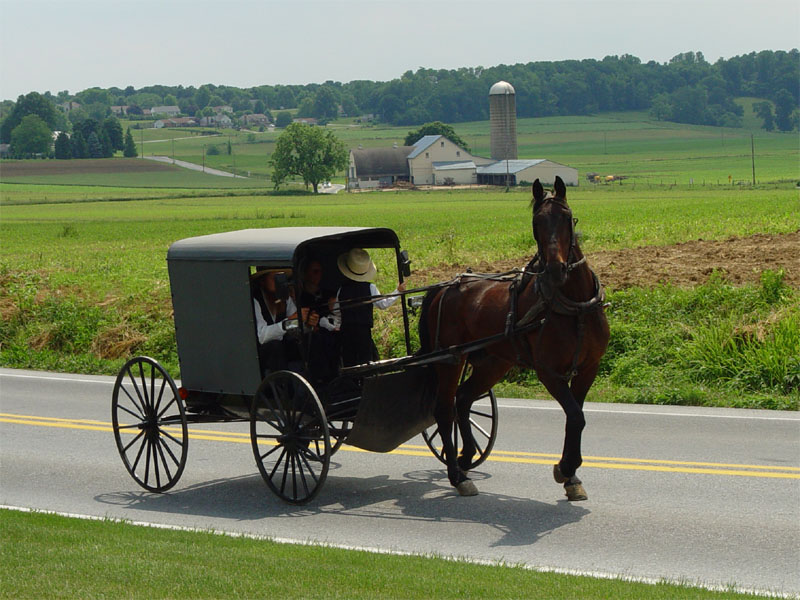For today’s daily create, I used the Portent Title Generator to generate a title for a blog post I’m supposed to write. I got this amazing title:

Now, the Amish are well-known for being pretty anti-technology, so I figure they wouldn’t be too big on DS106. They could probably come up with numerous old-timey things that are vastly superior to modern nonsense like DS106. Let’s look at some of these match-ups:
1) Web 2.0 vs. Horse and Buggy
The rise of dynamic user-generated content in the past decade or two has allowed people around the world to connect to each other. People are able to collaborate and exchange information around the world with ease. Web 2.0 is a major advancement in the way people use the internet.
However, a horse and buggy can also be used to connect people. You just hop in and the horse takes you where you need to go. In addition, it doesn’t require you to pay exorbitant fees to a cable company for sub-par service. It also doesn’t require electricity, and can’t be flooded with trolls and spammers.
Winner:

Horse and Buggy
2) Domain of One’s Own vs. Horse and Buggy
Domain of One’s Own is a project to allow people to carve out their own personal space in the internet. They can share their thoughts and ideas in an area all their own. It’s a fantastic way to share things that come to mind with others.
However, DoOO brings up plenty of questions about whether it’s even possible to truly own a domain. Can anything digital be owned? Are we really true to share anything we feel on our domain? A horse and buggy, however, definitely can be truly owned. You can go anywhere you want with it. If you want to share things, just hop in and ride it to wherever you want.
Winner:

Horse and Buggy
3) Daily Creates vs. Horse and Buggy
Daily Creates are a great way to get your creativity running every day. Just a short 10-20 minute project to get the creative juices flowing. Unless it’s this Daily Create, which is taking way longer than 10-20 minutes.
Horses and buggies also encourage creativity. For instance, what if you’re riding your horse and buggy and your horse gets thirsty? You better come up with a good creative solution to get that horse its water, since you can lead a horse to water, but you can’t make it drink. That definitely requires creativity.
Winner:

Horse and Buggy
4) Photoblitz vs. Horse and Buggy
A photoblitz is a neat way to practice your photography skills. It’s something of a photography scavenger hunt: you go around trying to find certain things to photograph within 20 minutes. It forces you to think outside the box when it comes to how you’re going to fulfill a particular requirement.
More important than a photograph, though, is an experience. And what’s quite like taking a leisurely ride in your horse and buggy? A picture of a tree that you took because you needed something green might be cool and all, but nothing will quite match the memory of riding in the picturesque countryside in your handmade buggy.
Winner:

Horse and Buggy
5) Livetweeting vs. Horse and Buggy
Livetweeting is like the internet version of sitting around with friends while you all watch a movie. You’re able to share your reactions in real time, which adds an entire extra dimension to media. With Web 2.0, even consuming media has become a collaborative activity.
Now imagine: you and your best friends pack up into your buggy. You ride out into the countryside with some good food and drinks. You sit together in the grass, watching the sunset. Once the sun is gone, you lie down next to the buggy and look at the stars. It’s better than watching a movie, and it’s entirely collaborative.
Winner:

Horse and Buggy
6) Philosophical Questions about the Internet vs. Horse and Buggy
DS106 prompts you to think about the internet in addition to just using it. It brings up questions like “Are we really free on the internet?”, “Are people too dependent on the internet?”, and “How am I going to finish all these assignments by Friday?”. It really encourages you to think about things you likely haven’t ever thought about before.
Horses and buggies also encourages you to ask the important questions. “Why does my horse smell like that?”, “Is it tired or does it just need some water?”, “Why does this wheel make the buggy bump like that?”. It also avoids the difficult philosophical questions that hurt your head. I for one don’t like my head to hurt.
Winner:

Horse and Buggy
7) Online Identity vs. Horse and Buggy
DS106 requires you to build up your online identity. It encourages you to use the internet for self-expression, creation, interaction, and discussion. The way you present yourself online is increasingly important in our society, as the internet continues to seep into every aspect of our lives.
That’s all online, though. That can be deleted. On the other hand, you also need to build an identity if you ride a horse and buggy. Will you present yourself as the coachman with the tall hat and the long beard? Perhaps the coachman with the long beard and a tall hat. Your choice of a blue or white shirt, and of black or very dark grey pants can also entirely change how others view you. Your buggy identity is even more important, as it will impact how anyone around you sees you and interacts with you. You can’t just delete your buggy identity.
Winner:

Horse and Buggy
8) Article Responses vs. Horse and Buggy
In DS106, you’ll have to read numerous articles and write your thoughts and reactions in blog posts. You’ll also comment on others’ responses, and they’ll comment on yours. You learn about a topic and then discuss it with your fellow students. This encourages critical thinking, and exposes you to opinions you might not have even considered.
Or, you could just hop in your buggy and take it to town. There are plenty of people all around who are willing to discuss interesting topics with you, from classics such as the weather to complaints about the government. Unlike article responses, these discussions are real-time and allow you to use body language and facial expressions, both of which simply aren’t possible in a text-based article response.
Winner:

Horse and Buggy
9) Digital Storytelling vs. Horse and Buggy
The crux of DS106 is right in its name: Digital Storytelling. According to Wikipedia, digital storytelling is:
[A] short form of digital media production that allows everyday people to share aspects of their life story.
Digital storytelling is a new and interesting way to share your story that has only become possible since the rise of Web 2.0, beginning around the mid-90s. Normal, everyday people are able to create art and share it in numerous types of media, including images, audio, and video.
The crux of a horse and buggy is also right in its name: a horse and buggy. According to Wikipedia, a horse and buggy is:
[A] light, simple, two-person carriage of the late 18th, 19th and early 20th centuries, drawn usually by one or sometimes by two horses.
Note the time there. 18th, 19th, and early 20th centuries. That’s over two centuries of years of horses and buggies, while digital storytelling can only claim two decades at most. The history of digital storytelling pales in comparison to the long and varied history of the horse and buggy. It honestly isn’t even a competition.
Winner:

Horse and Buggy
The results are in and the final scores are:
DS106: 0
Amish: 9
Looks like the Amish were entirely 100% right about DS106.


Add a comment